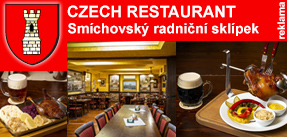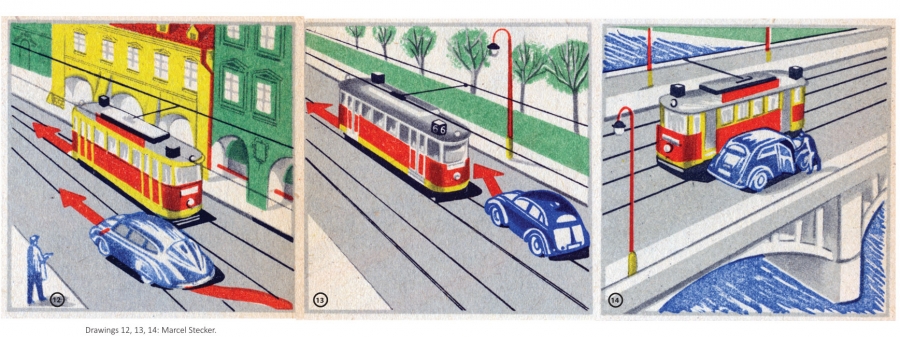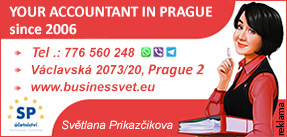THE HISTORY OF DRIVING SCHOOL ADVERTISING AND ILLUSTRATIONS OF ROAD SITUATIONS IN TESTS
Every driver has had to take a theory test before taking the practical part of the driving test to obtain a driving licence.
In this article we take a look back in time and see how the theory test questions have evolved and how the illustrations of different road situations have changed. All examples given are for information and illustration only and are from the time of publication. There may be errors or inaccuracies in these publications, we retain the original version of the published material from previous years.
So let's get started. One of the first publications devoted to driving was called "How to become a good chauffeur" (by I. Kučera), it was published in 1928.
If we study, for example, one of the advertisements published in I. Kučera's book, we can read that in 1928 the First Driving School in Prague 2 even organised special driving courses for women (1). Among other advertising offers of driving schools from this book, there is also information that is almost unheard of today: "The training in the driving school is conducted by the owner of the driving school himself, a mechanical engineer" or "During the winter months we offer significant discounts" (2).
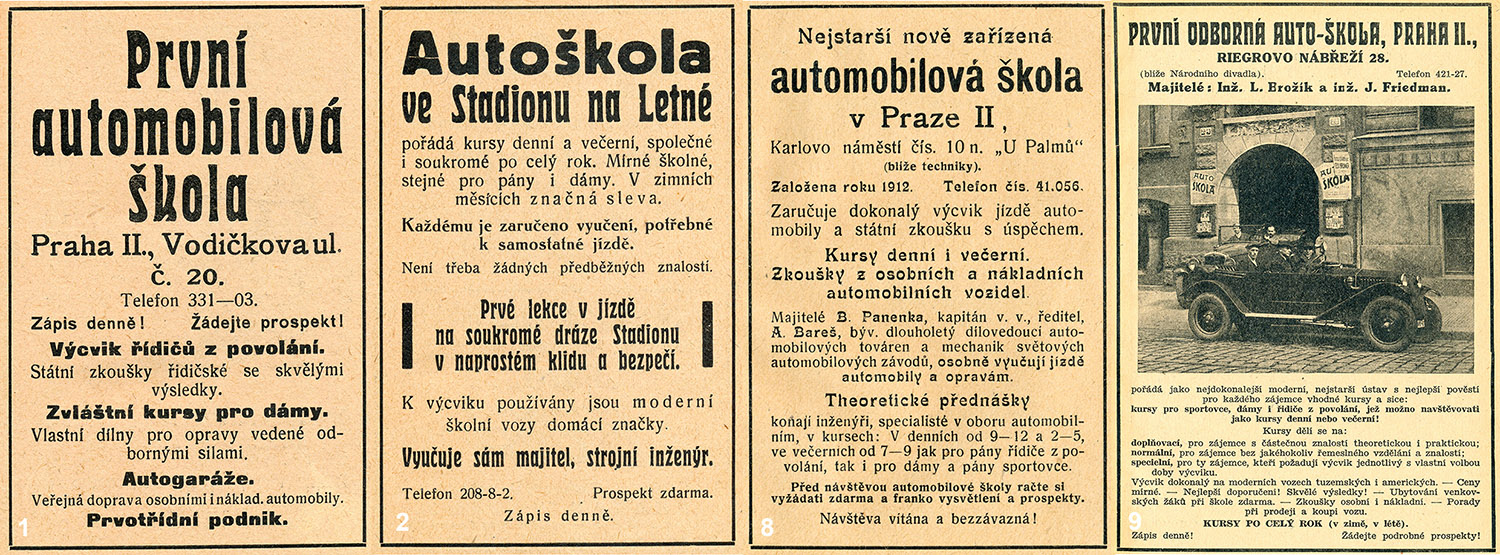
As early as 1928, the magazine 'Car Driver' (3), and then a number of other books, published illustrative black and white drawings, paying particular attention to traffic situations involving trams.
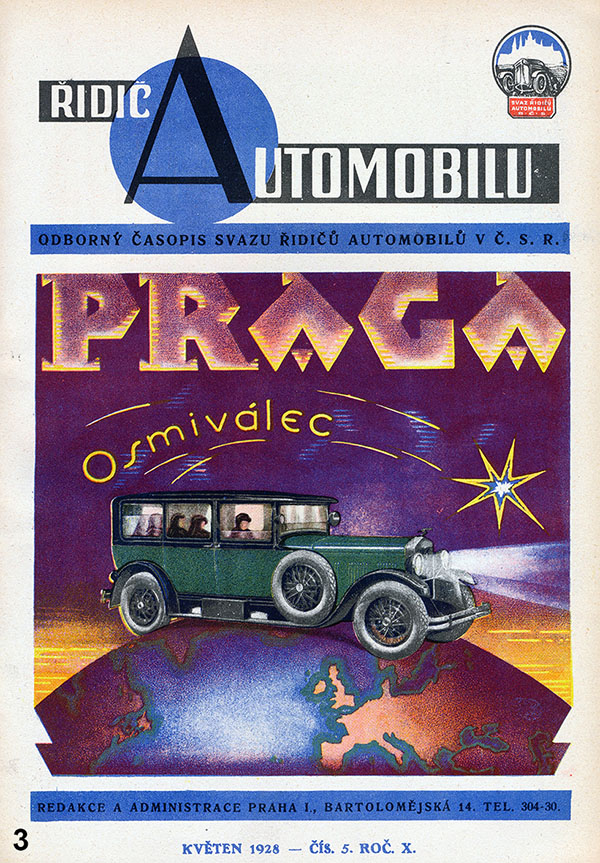
For example, one drawing warns: 'When passing an oncoming tram (the literal translation at the time was 'electric railway car'), even if it is at a station stop, be aware of pedestrians crossing the road immediately behind the tram' (4); or another drawing: ''Do not overtake a tram on bends and in areas with poor visibility in the direction of traffic.
Even if you don't collide with an oncoming tram, you will wreak havoc on the road" (5); and here's another: "Pass an island tram stop at a slow pace, as the distance of one step separates you from the passengers getting on and off the tram on the pavement" (6).

A 1928 publication in the magazine Svetozor reported that during examinations, future chauffeurs admitted to such "trifles" (the word is taken from the original text in the magazine): confusing the accelerator and brake pedals, or honking on an empty street while "remaining silent" on a sharp bend.
In a photo from 1928 (7) we can see the critical moment of future "chauffeurs" waiting for the examiner to arrive after their training at the oldest driving school in Prague, which used to be located at 10 Karlovo namesti.

Looking at the pictures, one might be surprised by the left-hand traffic.
We would like to explain that the tram infrastructure in Prague was changed to right-hand traffic only in November 1938.
In the publication "Practical School of Vehicles" from 1930 there are 50 questions for the exam.
It is interesting to see an advertisement for a driving school in this publication, which states that it is the First Specialised Driving School, which was located in Riegrová náměstí náměstí (now Masarykova náměstí) in 1930. The advertisement also offers driving courses for sportsmen (8).
Another advertisement from 1930 for a driving school founded in 1912 also contains information that is unusual for today: 'Accommodation for students from villages is free' (9).
The director of a driving school in Prague told a newspaper in 1932 about the training at his school: 'The teaching in a driving school should be visual, and every good driving school should have moving elements of the car, preferably with all parts in section, so that the pupil can see and understand the workings of each mechanism.
Photo (10) shows a modern classroom in a driving school in 1932. It is interesting to note (and we learn this from the same interview) that in the late 30s, practical training at the driving school was carried out not only individually, but also in groups of 3-4 students at the same time. This meant that one pupil would drive the car and the others would observe his driving and learn from his mistakes.
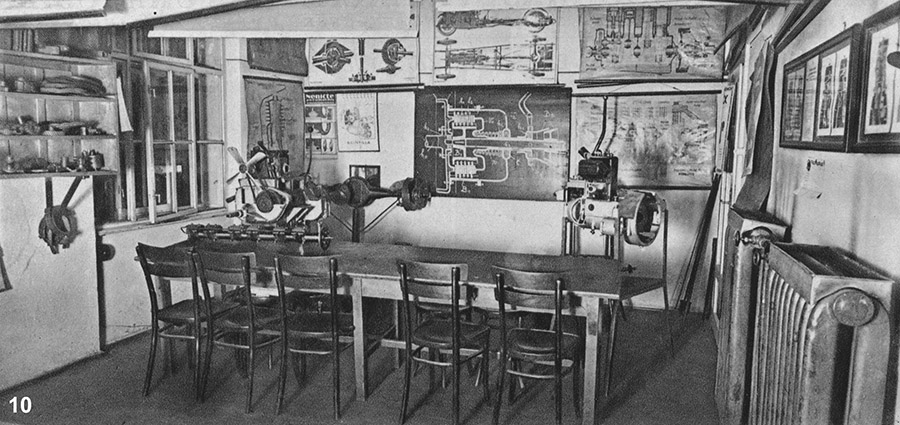
From the 1934 publication "How to become a good driver" by I. Kučera we learn that in Czechoslovakia in 1922 there were 9,929 registered cars, in 1928 - 59,409, and in 1933 the number of registered cars reached 130,000.
The book also contains a list of all the owners of Prague driving schools. It is also interesting to know that in 1934 there were 13 driving schools in Prague and 29 in Czechoslovakia (excluding Prague), and six state technical schools had driving courses.
In the 1935 publication 'Practical School of Vehicles' there is a situation on the road accompanied by a drawing with the inscription: 'Overtaking two overtaking cars' (11).
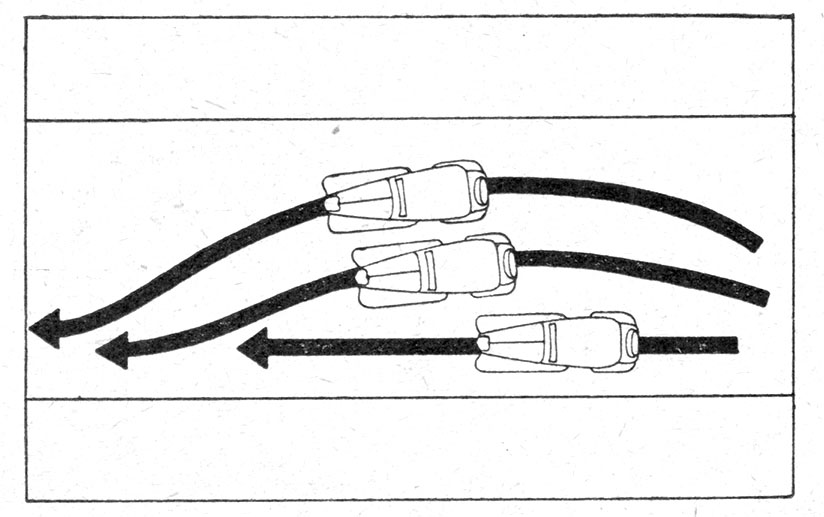
In 1955, the booklet 'Traffic Rules in Drawings' (by Václav Vinš) was published. You have a unique opportunity to see several illustrations.
For example, in drawing (12) there is an explanation: 'If there is not enough space between the tracks and the edge of the road lane for overtaking, it is possible to overtake the rolling stock on the left, but only on condition that the rolling stock is moving'; or the following drawings: 'the rolling stock is overtakes on the right' (13), 'It is also forbidden to stop on bridges where, in addition to the rolling stock, other vehicles can pass, in each direction on only one road lane' (14). And these are just a few examples from the distant year of 1955.
A complete set of all the questions that will appear on the theory test for today's driving licence applicants can be found at www.noveotazky.cz.
It should be noted that the Horázny Driving School in Prague, for example, has theory testbooks in English and Russian. The Horázny Driving School in Prague also has online test questions for the exam in both languages. The instructors at Horázny Driving School speak both English and Russian. Some of them are native speakers.
Read the continuation in the next issue of the publication.
Prepared by Boris Kogut.


